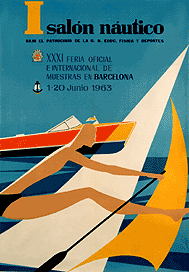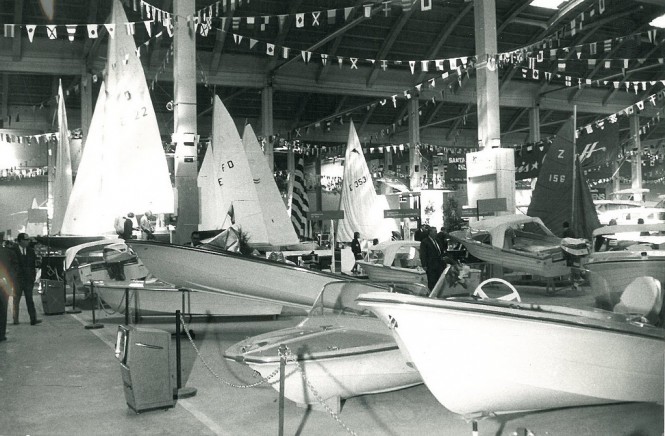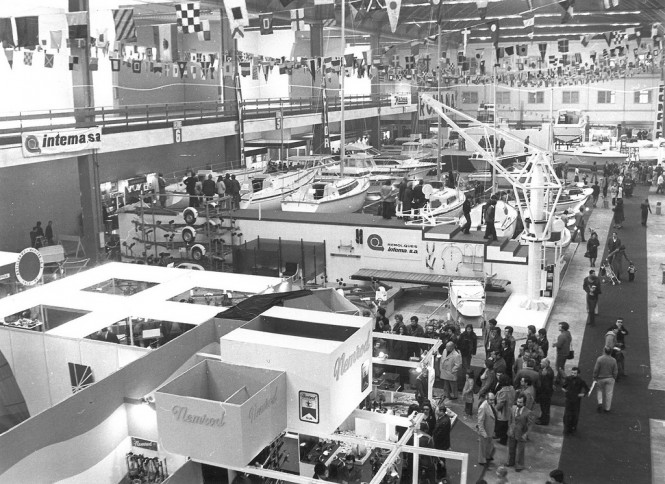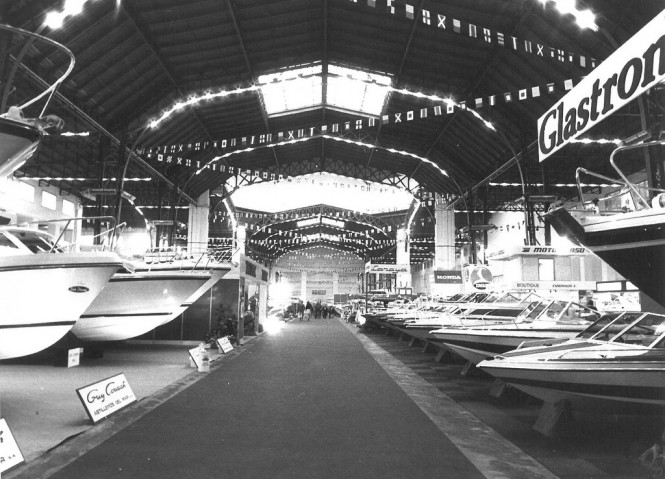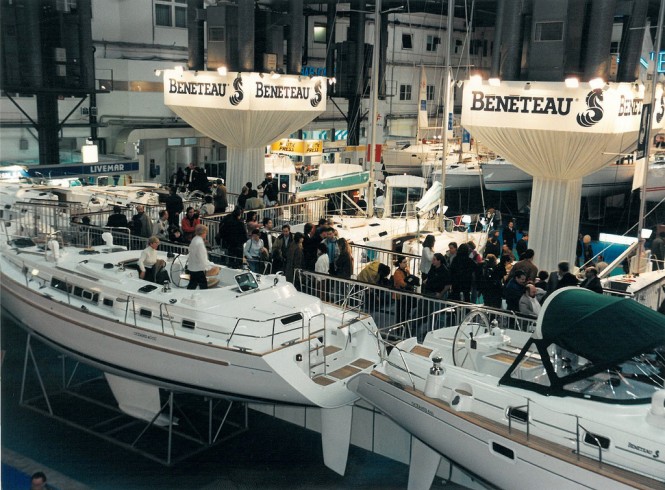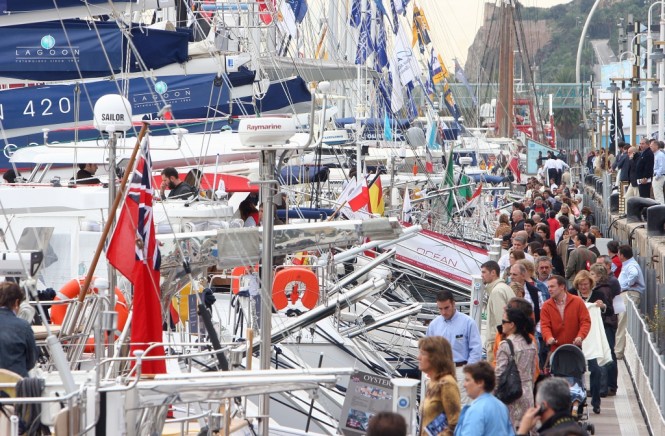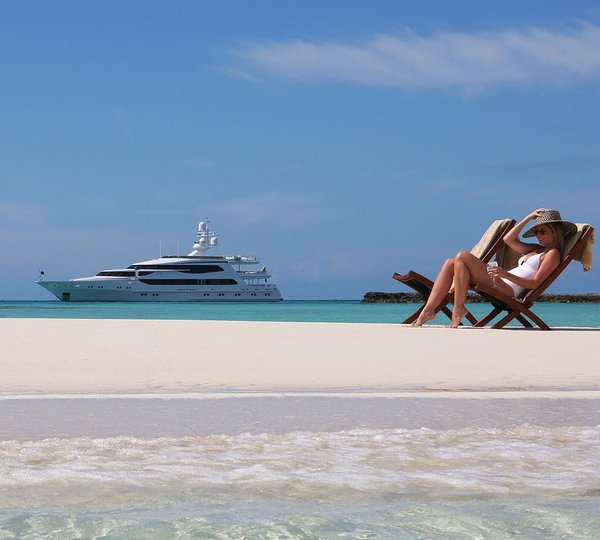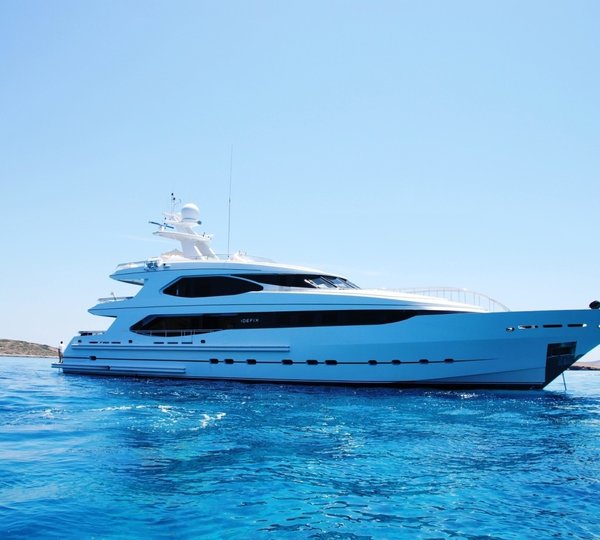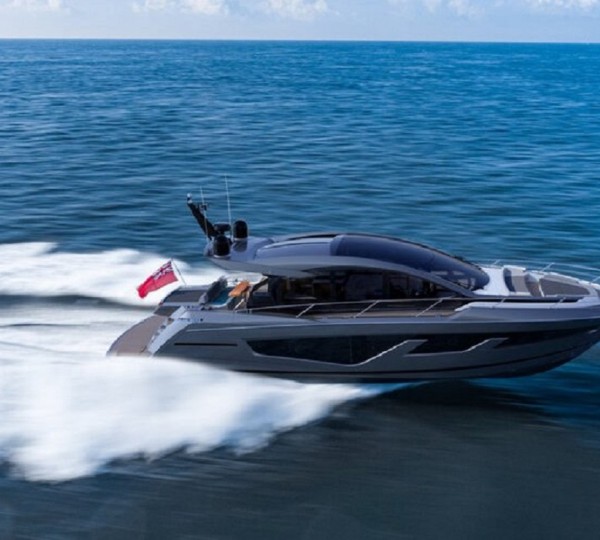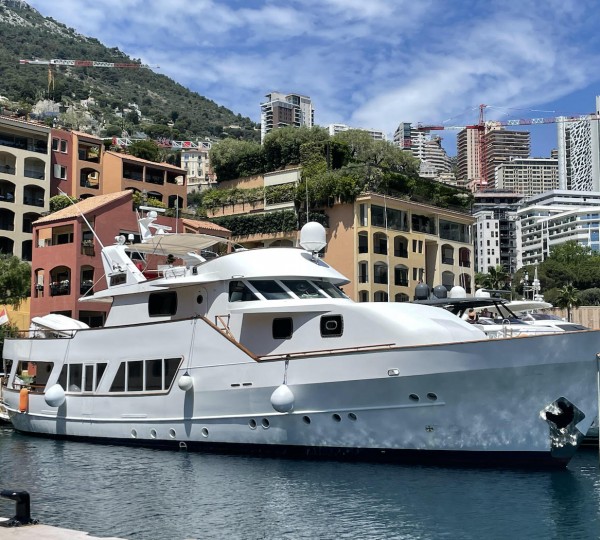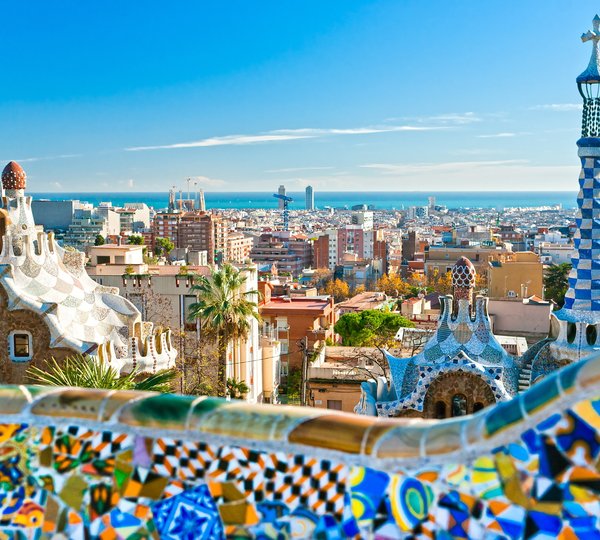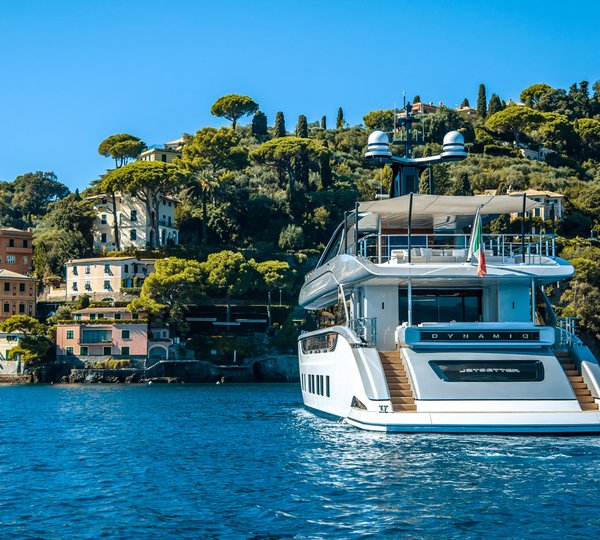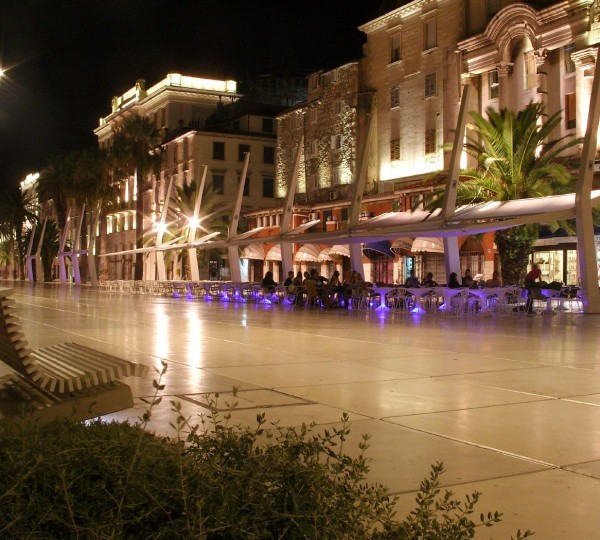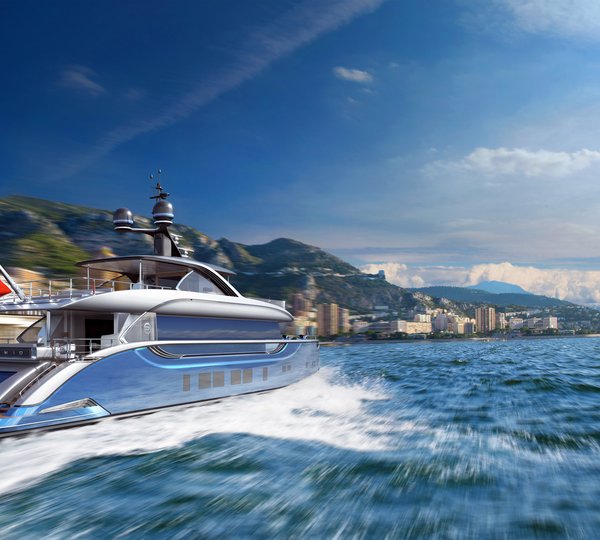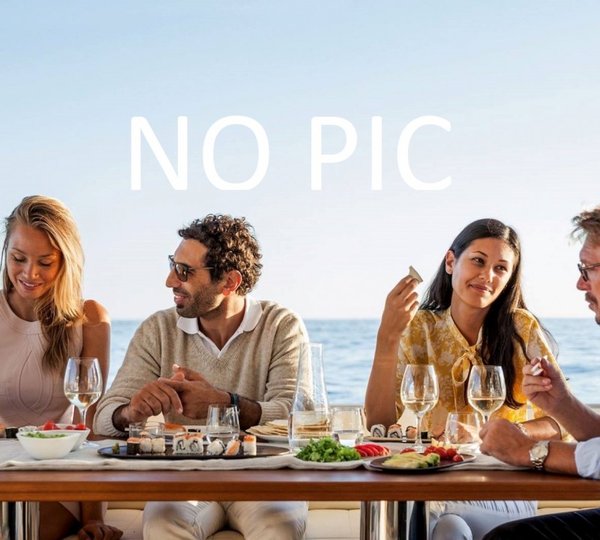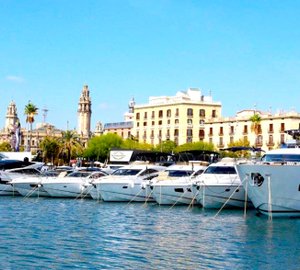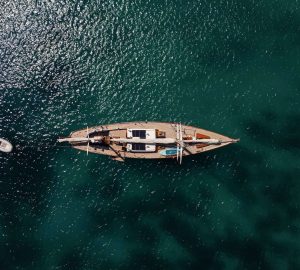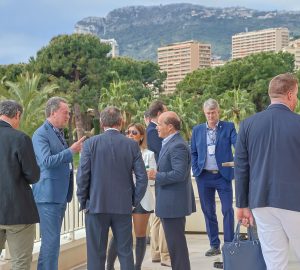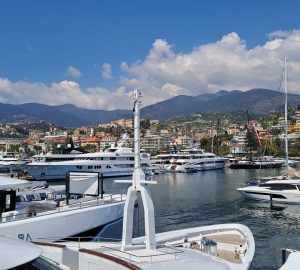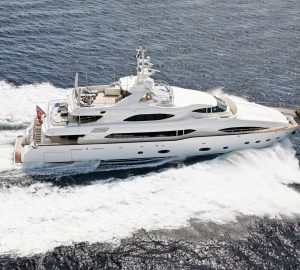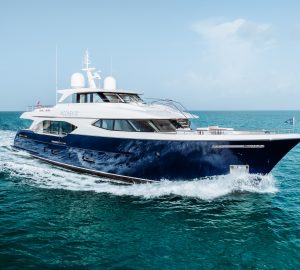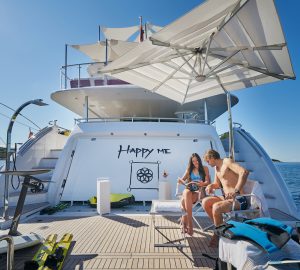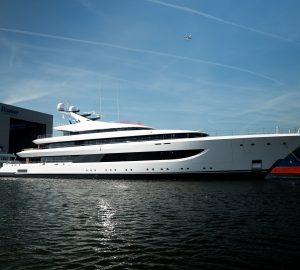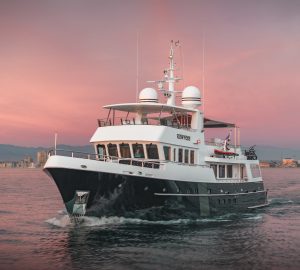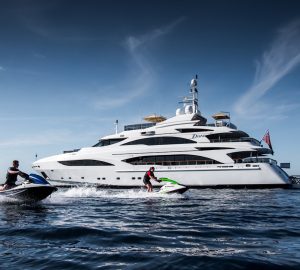The first edition of the Barcelona Boat Show was set up in June 1963, by a group of personalities who are linked to sports and the nautical industry, with Juan Antonio Samaranch at the forefront along with the support of Fira de Barcelona. The event, which is celebrating its 50th anniversary, has had a long and successful run and is, today, the sector’s biggest commercial platform in Spain, its main meeting point and an international leader.
The Barcelona Boat Show is created in 1963 with the aim of boosting the sports and recreational nautical industry and promoting nautical sports. At the time, there are only a few specialised companies and marinas and an absolute lack of knowledge among the Spanish population about the possibilities of navigation. Nonetheless, thanks to the enthusiasm and drive of a group of people passionate about boating and the few professionals that existed at the time, the show manages to open its doors successfully with the participation of 150 exhibiting companies in hall 1 of Fira de Barcelona’s Montjuïc exhibition centre.
After the success of the first edition, which took place within the framework of the very popular Feria de Muestras, it was agreed that the show would be an annual monographic event. In 1965, in the international category, it starts to exercise its role as a voice for the concerns of the sector, a function it has maintained until today.
Only two years later, in 1967, the nautical industry’s first major boom takes place: new ports are opened, boats are built with their own design or under licence from foreign shipyards, boats can be seen in the sea, wood starts to give way too fibre glass and ranges grow considerably. In line with this development, the show sees a significant increase in exhibitors in 1969 and its organising committee prioritizes the growth of young people’s enthusiasm for the sea -the appearance of the Optimist in ’68 being crucial to this.
The sector undertakes actions to raise the government’s awareness of the importance of carrying out reforms on registration procedures and taxation, with the aim of boosting an industry and trade that are forecast to grow and generate wealth and jobs for the country. The same year, the Law of Marinas is enacted; this is a basic toll for the expansion of the nautical industry in Spain and is considered to be one the Boat Show’s most important contributions to the sector.
The 70s: the boom of tourism and nautical sports
The sector becomes more and more professional and, in the 70s, there is a notable increase in enthusiasts, although the figures show a big gap between Spain and other countries. For example, while in Spain the ratio is one boat for each 1,500 inhabitants, in Italy it is one per 192 and, in Scandinavian countries, it is one per 62. In any case, the government gives signs of its interest in the sector and the show; and in 1973, it grants it the golden plaque for tourist merit, aware of the importance of nautical tourism in Spain.
The show also continues to reinforce its sports aspect as a complement to its commercial side. Boat Show Trophy Races are organised and awards are given to the best sportspersons of the year, such as the Spanish Optimist team, which become World Champions in the races held in Sweden.
Ecology starts to make an appearance with the exhibition of the Dephins, the first electric engines. In 1976, the event receives the name of “International Boat and Sports Show” and opens up to the camping and caravanning sector. Samaranch, who has been president of the show since its beginnings, leaves the post in 1978, having been appointed Spain’s ambassador in the Soviet Union and Outer Mongolia. He is replaced by Jacinto Ballesté, also member of the founding team. In 1979, the Asociación Española de Puertos Deportivos y Turismo is founded and its secretariat is installed in the Boat Show with Jorge Salvat at the helm. This represents one further step in the sector’s development.
The 80s: the popularisation of nautical activities
The 80s bring many changes and innovations: the foundations to make the show more international are laid, it is split into sectors and the dates are brought forward in order to allow shipyards to programme their purchases and production. These changes are positive for the event, which sees the number of exhibitors and exhibition floor space grow, up to the middle of this decade. New nautical sports, such as windsurfing, take off and the first solar panels to be installed on board are exhibited. Boat charters and hire start to have a place in the show, with proposals to attract a public eager to navigate but unable to afford a boat of their own.
The number of new products presented by exhibitors also increases. Electronic equipment becomes smaller and cheaper and bow propellers for medium-length boats are introduced, making it easier to dock and cast off.
Activities to bring the public into contact with the nautical world increase, with navigation courses, steering with a tow, submarine photograph contests, navigational simulators, announcement of races, etc. Associations, federations, and institutions hold more and more assemblies, juntas and meetings within the setting of the show. In short, the show, which receives the Creu de Sant Jordi (Saint Georges’ Cross) from the Generalitat de Catalunya in 1988, is confirmed as the sector’s meeting point.
The 90s: the first on-water show
The 90s start with optimism. In 1992, the Barcelona Olympic Games are held, which represents a turning point for tourism, including the nautical industry: charter companies are consolidated and new marinas are built.
The number of motor boats at the show increases, especially large units and fisher-cruisers, as do new products presented by exhibitors; new materials, such as the composite, the latest design and equipment proposals and the latest technological advances, above all in the field of electronics, are exhibited. The concepts of sustainability and ecology take hold in the nautical world, even in recreational fishing.
The show is also consolidated as the meeting point for the sector, which is more and more professionalized, taking its concerns to the administration via the new associations that continue to arise. It also becomes a setting for the announcement of important races.
Nonetheless, during this decade, the show’s main new feature is its arrival at the sea. As an addition to the Montjuïc exhibition centre, in 1995, Port Vell is set up for the first time to provide the setting for the On-Water Show with larger national and international boats. The same year, Jordi Montserrat takes over from Miguel Rafart as director of the show. In 1998, Fira de Barcelona’s Administrative Board appoints Jorge Salvat as President Emeritus, after having been the show’s president for 19 editions. He is replaced by the well-known impresario Enrique Puig.
A new century: the number of nautical enthusiasts grows
Enthusiasm for nautical activities multiplies and the show begins to develop in spectacular fashion. One of the highlights occurs in 2002, coinciding with the disappearance of the peseta and the introduction of the euro: the event moves to the new, modern Gran Via exhibition centre, maintaining the On-Water Show in Port Vell. In response to sector demands, the dates are also changed to the first week in November, in order to give continuity and avoid coinciding with other international shows.
Between 2002 and 2007, the Boat Show continues to grow, boosting the leisure activities and nautical sports sectors and showcasing national and world premiers. It is also the venue for meetings of international organisations with the presence of personalities related to the nautical industry from around the world, such as the International Sailing Federation (2003). New organisations are created within the show’s framework, such as the Asociación Española de Clubes Náuticos and the Asociación Nacional de Empresas Náuticas, ANEN (2006). In 2007, Jordi Freixas is appointed new director of the show to replace Jordi Montserrat.
After years of optimism, the sector begins to show signs of recession in 2008, which leads to concern that a world scale economic crisis is on the horizon. That year, Enrique Puig, the show’s president, passes away and, for that edition, the president emeritus, Jorge Salvat, steps in. In 2009, Luis Conde is appointed the new president.
From that year, the effects of the crisis are heightened. Until now, the show has been carrying out actions to support companies, reinforcing its role as the main platform for energising trade and the sector’s main setting, from which to express its needs and look for solutions to tackle the difficult economic situation.
Despite the recession, nautical companies have stood out for their efforts and commitment to technological innovation with the development of new, safer, sustainable and environmentally-friendly products. At the same time, lovers of the sea, who continue to grow in numbers, are looking for new formulas via which to enjoy the sea, and interest in charter and shared property is growing.

